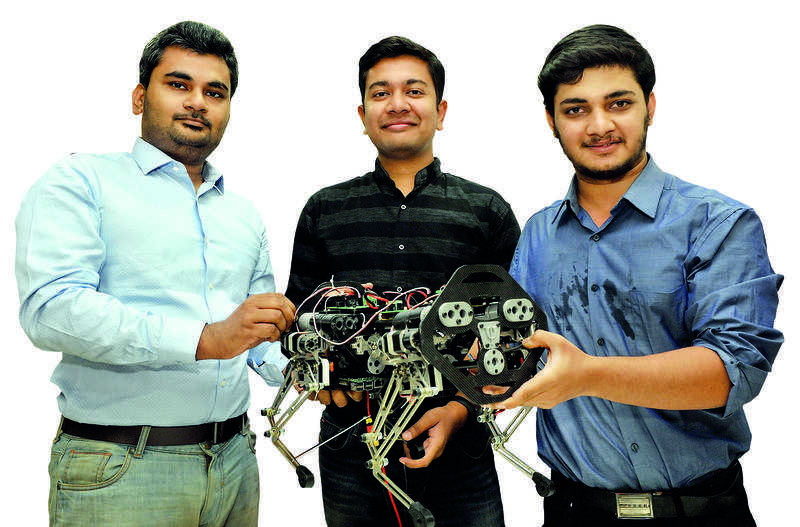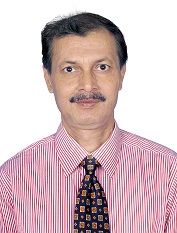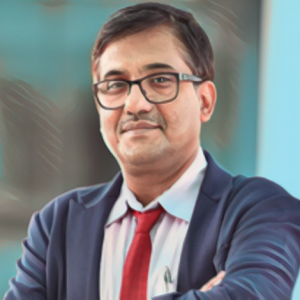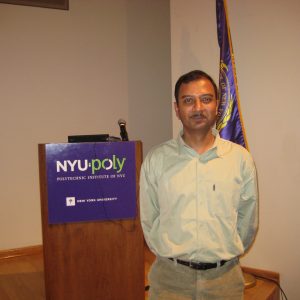AI rewrites the prescription to ‘predict and then prevent’.
The surgeon uses controls in the console to manipulate special surgical
instruments that are smaller and more flexible than the human hand.
But the biggest inroads of robots in
healthcare may be in the area of surgery. Robotic Surgery also known as
Robot-assisted surgery, marries advanced computer technology with the skill
and experience of a human surgeon. It is a method of
performing surgery using very small tools attached to a robotic arm. The
surgeon controls and manipulates the arm from a computer console. The huge
advantage is this: An electronic eye in the robot arm sends back a high
definition 3-D image, magnified 10 times, which the surgeon can view on
the computer screen: something not possible in conventional surgery.
Insta ECG
Headed by cardiologist Charit Bhograj, Tricog found a value proposition in that
ubiquitous diagnostic tool the Electro Cardio Graph or ECG. The likelihood of
surviving a heart attack is over 80 per cent if action is taken within the
first two hours. However, the average time between symptoms and treatment in
India is over 6 hours. By simply reducing this, millions of lives can be saved
every year.
While heart attacks can be detected by a quick ECG, there are two constraints:
First: most primary care clinics are not equipped with ECG machines. Second:
Even where such machines are available, staff do not receive sufficient
training in ECG interpretation. This is where Tricog steps in — by providing, the
fast and accurate diagnosis of an ECG, by combining AI Technology with
human expertise. Tricog ECG devices, strategically located at local clinics
help doctors detect heart complications within minutes. The devices are
cloud-connected and accessed by trained expert doctors. Within minutes of
collecting the ECG results, the diagnosis is shared with both the patient and
the doctor in real-time.
Analysing visual medical data
Bangalore-based SigTuple creates AI-based solutions to automate healthcare
screening. It has built intelligent screening solutions to aid diagnosis
through AI-powered analysis of visual medical data. The start-up founded by
Apurv Anand and Rohit Pandey in 2015, has created an AI platform, Manthana,
which helps analyse visual medical data efficiently. This analyses blood,
urine, semen etc — and chest X Rays.
‘Hot’ new way to check breast cancer
Most women are aware of the importance of checking early for any signs of
breast cancer. And some still keep putting off a traditional test because of
the hassle.
Machines assist Man
Care giving is hard work, tedious, boring and often emotionally draining. Most
of it is done by the lowest paid rung of medical workers. And there is always a
shortage of such staff. Which is why the healthcare assistive robot
market is seen as the most promising application of robots in medicine
— and an estimated $1.2 billion market within five years.
Healthcare
is poised at a crucial tipping point today. Thanks to technologies like AI,
Machine Learning and — new buzzword — Internet of Medical Things (IoMT),
vast amounts of clinical data can now be gobbled up, digested and interpreted
within seconds. The patient’s medical history, past and present lifestyle,
living environment, personal habits, present medication and genetics can be
rapidly analysed to predict future ailments that could conceivably lead to a
life-threatening situation. This is where predictive healthcare morphs into
preventive healthcare.
This
— complemented by DNA testing — is already being touted as the next big
technological advancement in healthcare. All this patient-centred data will go
into one electronic window called Electronic Health Record (EHR), which may
soon become a global standard: Your EHR will be accessible where ever you go
ensuring you receive immediate care, anytime anywhere.
Philips,
a leader in healthcare technology is touting another avatar of AI:
solutions that are secure, firmly grounded in scientific research, and
validated in clinical practice. They call this combination of AI solutions and
domain knowledge: adaptive intelligence. The company has launched a
global startup collaboration programme focused on the application of artificial
intelligence in healthcare. One of the three centres is Bangalore. The India
team screened more than 150 healthcare start-ups in the Asia-Pacific region
that had AI and radiology as part of their proposition and the most promising
five start-ups are being coached and facilitated today from Philips Innovation
Campus, Bangalore.
In
other ways too, India has become a fertile ground for startup innovators who
are cannily marrying AI and medicine to provide new generation healthcare
solutions. Here are the promising new ventures:
Robotic surgery
The
surgeon uses controls in the console to manipulate special surgical instruments
that are smaller and more flexible than the human hand. The robot replicates
the surgeon’s hand movements, and eliminates human shortcomings like hand
tremors. The result: surgeons are able to perform the most complex procedures
with a higher degree of precision, dexterity and control than humanly possible.
The
All India Institute of Medical Sciences, New Delhi, led the robotic revolution
in India. The first robotic surgery (of the prostate) was performed at
AIIMS in July 2006. The first robotic device to perform surgical procedures was
the da Vinci Surgical System launched in 2000 — and it remains the most widely
used worldwide — there are some 60 installations in India alone. Robotic
surgery is increasingly used the for treatment of prostate, kidney and
urinary bladder cancer as well as for spine surgery. But in a
country where such advanced technology tends to be concentrated in metros,
can robots perform surgery remotely — with the surgeon miles away
from the patient? This exciting possibility became reality — a few months
ago.
The
CorPath system from US-based Corindus Vascular Robotics was used to
conduct the world’s first-in-human robotic coronary surgery in India on
December 4 and 5, 2018. Five patients located at the Apex Heart Institute in
Ahmedabad, Gujarat, underwent the procedure from a distance of 32 km. It
was performed by Dr. Tejas Patel, Chairman and Chief Interventional
Cardiologist of the Apex Heart Institute, from inside the Swaminarayan
Akshardham temple in Gandhinagar. Robotic surgery is a done thing today and the
option is increasingly available in India’s leading hospitals. Now after
the successful Ahmedabad trial, the Next Wave may well be Tele
Robotics — robotics surgery from afar.
Tricog:
SigTuple:
Their
USP is the speed with which this data is analysed... enabling doctors to
make a quick diagnosis in life threatening situations. SigTuple was given
the ‘Judges’ Choice’ award at the Google’s first Demo Day Asia programme held
in Shanghai, late last year.
Nirmal
Now
maybe, more women will take the test —with a new procedure that is simple,
non-invasive and radiation free. It is called NIRAMAI (Non-Invasive Risk
Assessment with Machine Intelligence), and harnesses an innovation,
Thermalytix, a combo of AI with thermal imaging — eat maps — to detect
breast cancer at an early stage.
NIRAMAI
which means ‘free from illness’ in Sanskrit is a Bangalore-based tech startup
cofounded by Dr Geetha Manjunath, earlier a Principal Research Scientist at Hewlett
Packard Laboratories for 17 years and Nidhi Mathur, former Senior Product
Manager at Xerox Research.
The
breast cancer test is based on six patents and is currently available in
Bangalore, Mumbai, Hyderabad, Pune, Mysore, Dehradun and Odisha.
Robotic health-givers
Walking
robots that cart medication and supplies across hospitals are a common sight in
some Japanese and American hospitals, replacing ‘runners’ and ward boys.
But
what about a robot that wakes up elderly patients greet them with a human-like
voice, help them out of bed and make sure they are clean after
going to the toilet, then ensure they take their medicine? The Robot Caregiver
is triggering a gold rush-like trend in end-of-life care and will soon enable
many such patients to remain in their own homes. Robots with brand names
like Paro, Tugs and Bestic are available off the shelf, to assist
the elderly.
Source URL:
http://www.asianage.com/life/health/100319/the-new-mantra-of-healthcare.html (Accessed on 11 March, 2019)


















